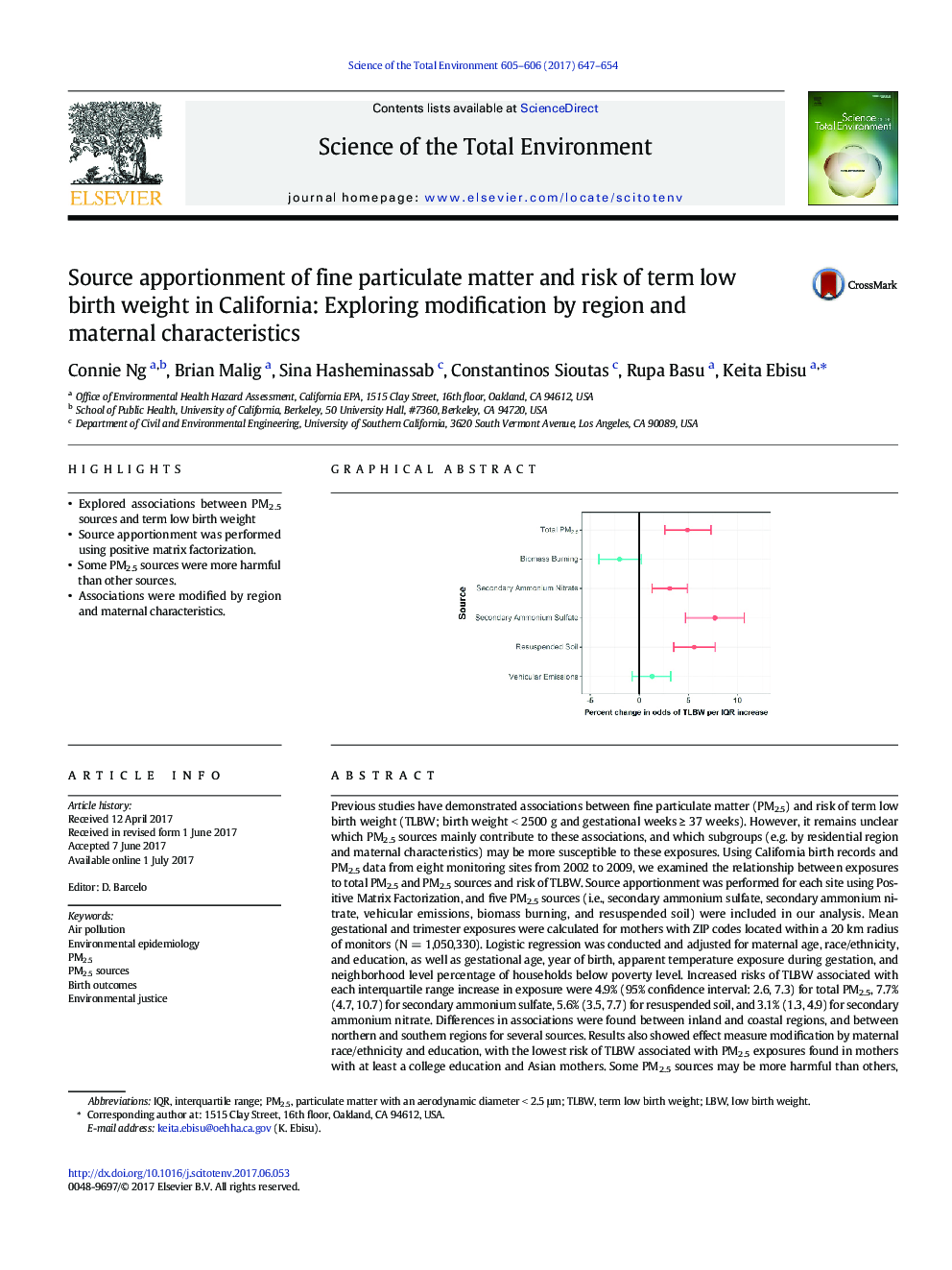| کد مقاله | کد نشریه | سال انتشار | مقاله انگلیسی | نسخه تمام متن |
|---|---|---|---|---|
| 5750633 | 1619695 | 2017 | 8 صفحه PDF | دانلود رایگان |
- Explored associations between PM2.5 sources and term low birth weight
- Source apportionment was performed using positive matrix factorization.
- Some PM2.5 sources were more harmful than other sources.
- Associations were modified by region and maternal characteristics.
Previous studies have demonstrated associations between fine particulate matter (PM2.5) and risk of term low birth weight (TLBW; birth weight < 2500 g and gestational weeks â¥Â 37 weeks). However, it remains unclear which PM2.5 sources mainly contribute to these associations, and which subgroups (e.g. by residential region and maternal characteristics) may be more susceptible to these exposures. Using California birth records and PM2.5 data from eight monitoring sites from 2002 to 2009, we examined the relationship between exposures to total PM2.5 and PM2.5 sources and risk of TLBW. Source apportionment was performed for each site using Positive Matrix Factorization, and five PM2.5 sources (i.e., secondary ammonium sulfate, secondary ammonium nitrate, vehicular emissions, biomass burning, and resuspended soil) were included in our analysis. Mean gestational and trimester exposures were calculated for mothers with ZIP codes located within a 20 km radius of monitors (N = 1,050,330). Logistic regression was conducted and adjusted for maternal age, race/ethnicity, and education, as well as gestational age, year of birth, apparent temperature exposure during gestation, and neighborhood level percentage of households below poverty level. Increased risks of TLBW associated with each interquartile range increase in exposure were 4.9% (95% confidence interval: 2.6, 7.3) for total PM2.5, 7.7% (4.7, 10.7) for secondary ammonium sulfate, 5.6% (3.5, 7.7) for resuspended soil, and 3.1% (1.3, 4.9) for secondary ammonium nitrate. Differences in associations were found between inland and coastal regions, and between northern and southern regions for several sources. Results also showed effect measure modification by maternal race/ethnicity and education, with the lowest risk of TLBW associated with PM2.5 exposures found in mothers with at least a college education and Asian mothers. Some PM2.5 sources may be more harmful than others, and a better understanding of the relative toxicity of PM2.5 from each source could lead to more targeted and cost-effective regulations to protect public health.
102
Journal: Science of The Total Environment - Volumes 605â606, 15 December 2017, Pages 647-654
